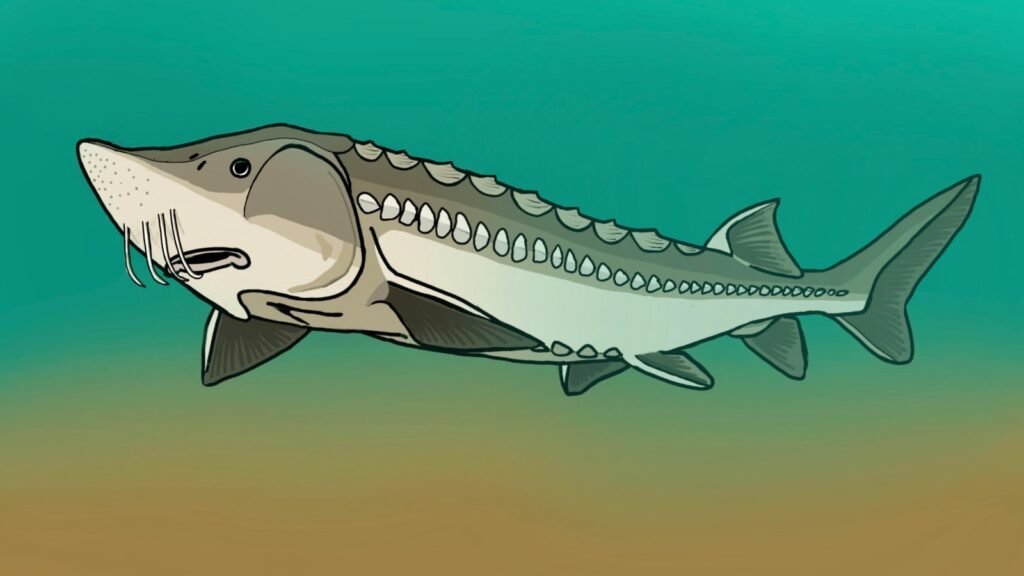A 72-million-year-old sturgeon fossil has been discovered in Edmonton’s North Saskatchewan River Valley, making it the first fish material found in the same period and geographic region.
Several hikers came across a sturgeon skull nearby. Capilano Park Last February, they thought it might be a piece of dinosaur skin. They took it to a star paleontologist at the University of Alberta. phil curryconfirmed that it is indeed part of an ancient fish.
Curry gave the fossil to a fish paleontologist. Alison MurrayIt was determined that sturgeon A species of North American temperate freshwater fish that lives in the northern Saskatchewan River, it is estimated to have been about 2 meters long when alive.Murray and her team named the new species Boreiosturion Labyrinthus.
Capilano Park rests on a geological structure known as the freshwater Horseshoe Canyon Formation. This formation was formed during the Campanian period of the Cretaceous period, approximately 84 to 72 million years ago.
according to Research published last August Murray and co-authors Luke Nelson and Donald Brinkman, Journal of Vertebrate Paleontology, The fossils found there fill a temporary gap in what is known about the distribution of sturgeon at the end of the Cretaceous period, just before the mass extinction event (probably a meteorite) that wiped out the dinosaurs.
It also bridges the geographic gap between sturgeon found in the southern regions of southern Alberta, Montana, and North Dakota and the northern regions of Alaska and Peace River, Alta.
“This is the first description of the fish within Edmonton’s boundaries, so it’s kind of exciting,” says Luke Nelson, second author of the paper.
This study is also Nelson’s first publication. Currently working on his master’s degree, he was an undergraduate working in Murray’s lab when the sturgeon skull was discovered, and she invited him to help her classify the specimen.
Nelson, who has been obsessed with sturgeon since seeing specimens at various aquariums as a child, may be the world’s biggest fossil fish fan.
“If you had asked me at 10 years old what my dream job was, I would have said working with fossil fish. I just loved fish,” he says. “I was torn between marine biology and paleontology, and this is the best of both worlds.”
“It’s been an incredible journey growing up spending time in that museum and now working with some of its researchers,” he added, the paper’s third author. He pointed out that Brinkman was a researcher. Royal Tyrrell MuseumUntil a few years ago, I was the curator of .
What struck Nelson most about the new sturgeon fossil was the unique markings on the back of its skull.
“There are three unique patterns that are different from any previous patterns described at that time,” he says. “This is from a part of the Cretaceous period that previously had no North American sturgeon.”
But the aspiring paleontologist is on a mission to show the world just how great sturgeon are.
“They are some of the largest teleost fish we have today, and have been around since dinosaurs roamed land. They look almost like dinosaurs, because of their enormous size and backs. Because it looks kind of evil because it has these giant running scales.”
Now that the sturgeon skull has been classified, named and cataloged, it will enter the Vertebrate Paleontology Laboratory in the U of A’s School of Earth and Atmospheric Sciences, which houses fossils of more than 50,000 vertebrates. There is.
What about sturgeon, which have survived at least 72 million years of evolution and still swim in the North Saskatchewan River?
“It’s really important that we protect them and treat them with respect,” Nelson said, noting that the species in Alberta is protected.
“They’re a really cool group of animals.”

